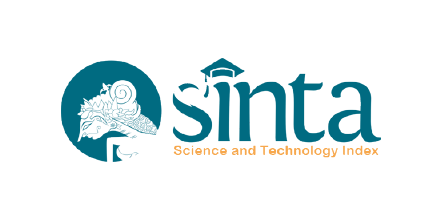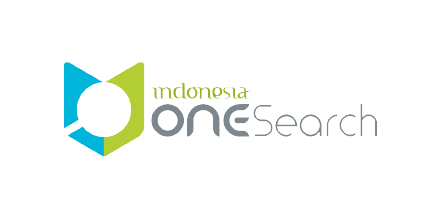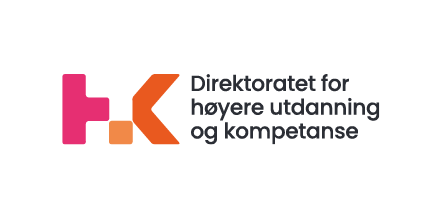People with Disabilities in Qatar
Empowerment, Aspirations, and Society’s Behaviour Influences
DOI:
https://doi.org/10.21776/ub.ijds.2023.010.01.01Keywords:
Accessibility, Empowerment, People with Disabilities, Qatari Culture, Theological ImpactAbstract
People with disabilities have become a critical, international phenomenon. People with disabilities are those who have a physical or mental condition which limits their movements, senses, or activities. This article is a discussion of the factors which influence the empowerment of Qatari people with disabilities. The Qatari government has gone a long way towards making people with disabilities valued and appreciated by providing opportunities for education and work. Qataris are also keen to apply the literal teachings of Islam, although Qatar’s tribal culture has an effective influence in dealing with people with disabilities. The analysis of the findings from the interviews with charitable organisations’ staff members showed that Qatari people with disabilities still lack the empowerment to achieve their aims of being productive members of society. People with disabilities in Qatar desire a decent life which meets their basic needs such as healthcare, education, and job opportunities.
References
Al Muftah, G., (2022), “About Ghanim”, https://cutt.us/hJKma, accessed at March, 16th, 2022.
Almeezan, (2004), “Law No. 2 of 2004 in Respect of People with Special Needs”, https://bit.ly/3cyWWX1, accessed at March, 16th, 2022.
Al-Rawi, T. “People with Special Needs. their Rights and Reality in the Arab World”, http://bit.do/fTQ6n, trans. by Ola Alkahlout, accessed at July, 07th, 202.
Anan, E., (2018), “On their International Day: 40 million Arabs with special needs suffer marginalization”, https://bit.ly/2ULWCPn, trans. by Ola Alkahlout. accessed at March, 16th, 2022.
Caldwell, K., Harris, P., S., and Renko, M., (2016), “Social entrepreneurs with disabilities: Exploring motivational and attitudinal factors”, Canadian Journal of Disability Studies, Vol 5 (1).
Cheruvallil-Contractor, S., (2012), Muslim Women in Britain: De-Mystifying the Muslimah. London: Routledge.
De Bel-Air, F., (2014), Demography, Migration, and Labour Market in Qatar. Gulf Labour Markets and Migration, 8, 1-18. https://bit.ly/3eDQWyE, accessed at March, 16th, 2022.
Disabled World, (2009), “Definitions of Disability”, http://bit.ly/38DYNIY, accessed at March, 16th, 2022.
Fromherz, A. J., (2012), Qatar: A Modern History, New York: I.B. Tauris & Co. Ltd.
Ghanayim, M., (1994), “Mahmud ʾAmin al-ʿAlim: Between Politics and Literary Criticism”, Duke University Press. Vol 15(2).
Gulf-Times, (2017), “New database for the elderly and persons with disabilities”, http://bit.ly/2NiI5aD, accessed at March, 16th, 2022.
Haqqi, R. A. A., (2015), “The Philosophy of Islamic Political Economy: Introductory Remarks”, Journal of Islamic Studies and Culture. Vol 3 (1).
Hassanein, E., (2018), “Women with Disabilities in the State of Qatar: Human Rights, Challenges and Empowerment Means. Wise-qatar. http://bit.ly/3rLN2Yk, trans. by Ola Alkahlout, accessed at March, 16th, 2022.
Hukoomi, (2022a), “About Qatar2, http://bit.ly/38GFxup, accessed at March, 16th, 2022.
Hukoomi, (2022b), “Assistive Technology Center for Disabled People”, https://bit.ly/38EeT54, accessed at March, 16th, 2022.
Jasiak, A., & Królak, P., (2018), “The Importance of Work for People with disabilities and Evaluation Imposed Obligations of Employers: Design For Accessibility”, https://cutt.us/EoH7Q, accessed at March, 16th, 2022.
Larsson, S., (2006), Disability management and entrepreneurship: Results from a nationwide study in Sweden. International Journal of Disability Management 1(1), 159-168.
Ministry of Development Planning and Statistics, 2017, "Qatar Social Statistics". https://bit.ly/3bPhCL2, accessed at March, 16th, 2022.
Ministry of Foreign Affairs, (2018), “Qatar Keen on Implementing Obligations towards Convention on Rights of Persons with Disabilities”, http://bit.ly/3vvyQ7Y, accessed at March, 16th, 2022.
Ministry of Public Health, (2022), “Summary National Mental Health & Wellbeing Strategic Framework 2019-2022”, https://bit.ly/3wNo8Js, accessed at March, 16th, 2022.
Novak, J., (2015), “Raising Expectations for U.S. Youth with Disabilities: Federal Disability Policy Advances Integrated Employment”, Bowling Green State University, Vol 5 (1), Page 91-110, USA: Ohio.
OHCHR, (1975), “Declaration on the Rights of Disabled Persons, Proclaimed by General Assembly resolution 3447 (XXX) of December 09 19752”, http://bit.ly/3vttmL8, accessed at March, 16th, 2022.
Olkin, R., (2002), Could you hold the door for me? Including disability in diversity. Cultural Diversity and Ethnic Minority Psychology, 8(2), 130–137. https://doi.org/10.1037/1099-9809.8.2.130, accessed at March, 16th, 2022.
Oppong, S. H., (2013), "The Problem of Sampling in Qualitative Research". Asian Journal of Management Sciences and Education. Vol. 2(2).
Planning and Statistics Authority State of Qatar, (2020), “People with special needs and difficulties”, http://bit.do/fTQ6f, accessed at March, 16th, 2022.
Planning and Statistics Authority, (2022), “Monthly Figures on Total Population”. https://cutt.us/eTmde, accessed at March, 16th, 2022.
Qatar University, (2022), “Special Needs”, http://bit.ly/3tpAtCp, accessed at March, 16th, 2022.
QSCCB, (2016), “About QSCCB”, https://bit.ly/3rgBBZk, accessed at March, 16th, 2022.
Ragin, C. C., & Amoroso, M. L., (2011), Constructing Social Research: The Unity and Diversity of Method, 2nd edn, Sage, London.
Rao, A. P., (2018), “Kholoud Proves Disability is Not an Obstacle to Success”, http://bit.ly/30NFcl7, accessed at March, 16th, 2022.
Sahih al-Bukhari, Vol. 4, Book 52, Hadith 145, (2022), “(56) Chapter: The help of poor and pious men in war”. https://bit.ly/3BeR1lx, accessed at March, 16th, 2022.
Shafallah, (2020), “Al-Shafallah Publishes its Information Report”, http://bit.ly/2Our9i5, accessed at March, 16th, 2022.
The Equality Commission for Northern Ireland, (2007), “Definition of Disability”, https://cutt.us/zOODu, accessed at March, 16th, 2022.
The Surgeon General, (2005), “The Surgeon General's Call to Action to Improve the Health and Wellness of Persons with Disabilities”, https://cutt.us/FzAt0, accessed at March, 16th, 2022.
United Nations, (2013), “Thematic study on the right of persons with disabilities to education”. https://cutt.us/MWCEd, accessed at March, 16th, 2022.
Viriri, P., & Makurumidze, S., (2014), Engagement of disabled people in entrepreneurship programmes in Zimbabwe. Journal of Small Business and Entrepreneurship Development, 2(1), 1-30.
WHO, (1980), “International Classification of Impairments, Disabilities, and Handicaps”. https://cutt.us/XvFCn, accessed at March, 16th, 2022.
WHO, (2021), “Disabilities”, https://cutt.us/xIPMe, accessed at March, 16th, 2022.
Published
How to Cite
Issue
Section
Categories
License
Copyright (c) 2023 Ola Alkahlout, Noura Aljomaa

This work is licensed under a Creative Commons Attribution-NonCommercial 4.0 International License.















